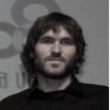The session focuses on conversion systems for wind turbines based on power electronics, mainly for off-shore applications. The trend of higher power brings several challenges related to compliance with grid requirements. Harmonics and resonances become crucial issues that require proper analysis and innovative yet practical solutions. This session covers aspects related to power converter architectures and the modulation and control of the converter. We will look at the interaction with the electrical grid as well as practical aspects about how to optimise the primary control in different wind conditions and how to effectively test the control of large-scale wind systems in emulated conditions.
You attended this session?
Learning objectives
- To explain a number of ways that the different power converter systems (including their filter) impact the real operation of an offshore wind park;
- To identify the value of grid emulator test benches;
- To list possible advantages of frequency converters in wind energy;
- To explore methods that lead to reducing the cost reductions of integrating offshore wind energy.


Presenter

Co-authors:
Markel Zubiaga (1) F Guillermo Nunez (1) Danel Madariaga (1) Jokin Aguirrezabal (1) Ignacio Zubimendi (1) Inigo Garin (1) Eduardo Burguete (2) Mikel Zabaleta (2) Igor Larrazabal (1)
(1) Ingeteam Power Technology, Zamudio, Spain (2) Ingeteam Power Technology, Sarriguren, Spain
Presenter's biography
Biographies are supplied directly by presenters at WindEurope Summit 2016 and are published here uneditedMarkel Zubiaga received the M.Sc. degree in electrical engineering in 2005 and the Ph. D. in 2011, both from the University of Mondragon, Spain. Since 2011, he has been working as R&D Engineer in the Renewable Energy Systems Department of Ingeteam.
His research interests are in the field of power electronics, wind power, offshore wind power and energy transmission systems.
Abstract
Low scale grid emulator test bench for in-house validation of high power converters oriented to offshore
Introduction
Power grid emulators have been spreading in recent years in order to test distributed renewable generation systems. Voltage source based power grids can emulate extreme grid disturbances as voltage faults and recreate any operating point of the grid. These characteristics make grid emulators an excellent way to validate the capability of any equipment upon specific grid operator requirements.
Offshore wind turbines are connected to inter-turbine grids several kilometers away from shore. The definition of these grids can vary significantly from one location to another and their definition is not as clear as it is onshore. Thus, a testing procedure using a grid emulator can help to ensure the correct integration in the grid of these wind turbines.
Approach
If the grid emulator test bed is located in an in-house power laboratory and the whole system (test bed and the equipment under test) has been modeled and translated to a simulation environment, the product developing process is much shorter and it is performed with more guarantees. Furthermore, if after the commissioning of the wind turbine, an event of malfunction is reported, a grid emulator presents a way to recreate the event in a controlled environment in order to improve the functionality of the wind turbine.
Main body of abstract
The developed test bed has not enough rated power to test the real equipment (up to 12MW) because of practical reasons. To perform fault tests with a grid emulator, at least 50% more rated power than the equipment under test (EuT) is convenient. To optimize the cost of the system and operability, the EuT is scaled. In the present test bed it is possible to test equipments under the following grid conditions:
• Voltage dips: Three-phase, two-phase or mono phase.
• Grids with high negative sequence component in steady state.
• Frequency deviations.
• Phase-angle jumps
• Grids with high harmonic components.
• Flicker.
The grid emulator is based on a back-to-back conversion line rated at 750kVA – 690V. The scaled EuT is composed of two 3L-150kVA conversion lines connected to a 6 phase permanent magnet generator (PMG). Both converter lines have implemented redundant control logics to improve availability.
The main purpose is to test a system as close to the real one as possible. For this purpose, the control hardware and the control code in the real equipment and the scaled one are the same, with the same control logics, auxiliary equipment and input/output signals. A wind turbine level Control (WTC) system is also implemented in order to test dynamic operations.
As regards the power circuit, the components of the main power circuit are scaled maintaining the same per unit value. To make the EuT more flexible, the inductors of the system have several connection points to configure different inductivity values. This allows configuring the power circuit of the EuT to represent the whole range of converter product family (5 – 12MW)
Conclusion
The whole system is modeled and translated to a simulation scenario, where the control code implemented is the same for the three different cases: simulation scenario, test bed and real equipment. This way, the simulation models can be improved by comparing the results in the test bed with the results in the simulated scenario. More accurate and validated simulation models of the converter can be used by the wind turbine manufacturer to optimize the wind turbine and the transmission system.
Learning objectives
By defining a protocol which includes the most exigent scenarios and tests, every aspect of the wind turbine control can be verified in a short period of time, new control features can be easily, fast and without additional cost tested in house, making sure that the new features have a good coupling in the control code.







Follow EWEA on: